7 Ways to Get Wood Glue Off Clamps (Tested & Ranked)
What’s the best way to remove wood glue from clamps? I tested seven methods and ranked them based on how well they worked. Read on for the results!
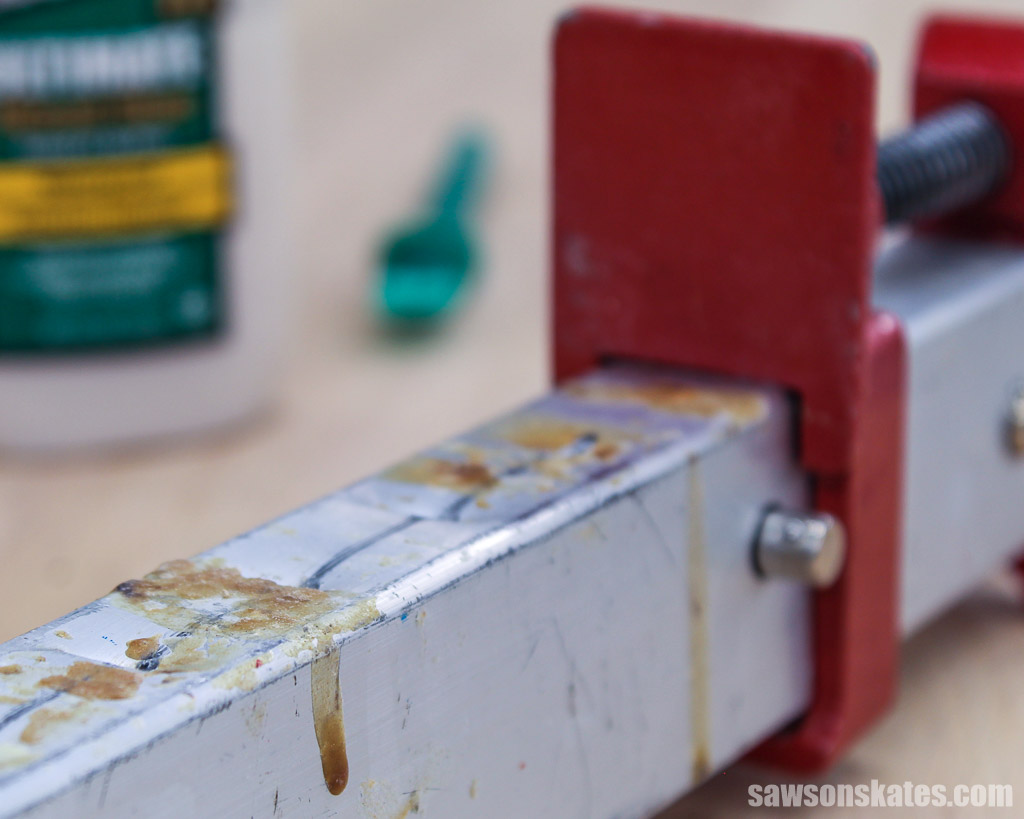
If you’re a woodworker, you know the importance of using clamps to hold your workpieces in place while you glue them. But what do you do when the glue dries on your clamps? It can be difficult to remove, and if you don’t get it off, it can scratch or dent your project’s parts.
In this article, I tested seven methods for removing wood glue from clamps and ranked them based on how well they work. I’ll also share my thoughts on which technique I thought was the easiest and tips to prevent glue from getting on your clamps in the first place.
Table of Contents
- Removing Wood Glue From Clamps Comparison
- 7 Ways to Remove Wood Glue From Clamps
- How to Prevent Glue from Getting on Your Clamps
This article contains affiliate links. If you purchase from these links, I may earn a small commission at no additional cost to you. Visit my site policies for more information.
Removing Wood Glue From Clamps Comparison
I follow several Facebook woodworking groups, and recently two members in two separate groups asked for advice about removing dried wood glue from their clamps.
As with most social media posts, responses included constructive solutions and not-so-helpful ideas such as “Just leave it on there. It adds character.”
Or “Just slide the head down, and the glue comes off.” I’ve been using clamps for more years than I care to admit and have never been able to make this happen.
Another group member responded, “Why bother removing it?” If glue has ever dried on your clamps, you know it makes them difficult to adjust, but more importantly, it can damage the surface of your project.
In the end, responders suggested nearly a dozen glue removal methods, so I decided to test the top seven and rank them based on effectiveness and ease of use.
Here are the seven methods I tested for removing wood glue from clamps:
- Hot Water and Dish Soap
- Acetone
- Vinegar
- WD40
- Denatured Alcohol
- Heated Paint Remover
- Freezer
The removal methods fell into two categories: dry and liquid. The dry process involved using a heated paint remover or placing the clamp into a freezer and then scraping the dried glue with a putty knife or 5-in-1 tool.
The liquid methods involved soaking the clamp in a liquid such as hot water and soap, acetone, vinegar, WD40, or alcohol. For all of these techniques, I soaked a rag in the liquid and then placed it on the clamp for about 20 minutes.
When the time was up, I first did a scratch test with my fingernail to see if the glue had softened. Depending on the result of that, then I used a rag soaked in the liquid or a putty knife and attempted to scrape off the remaining glue.
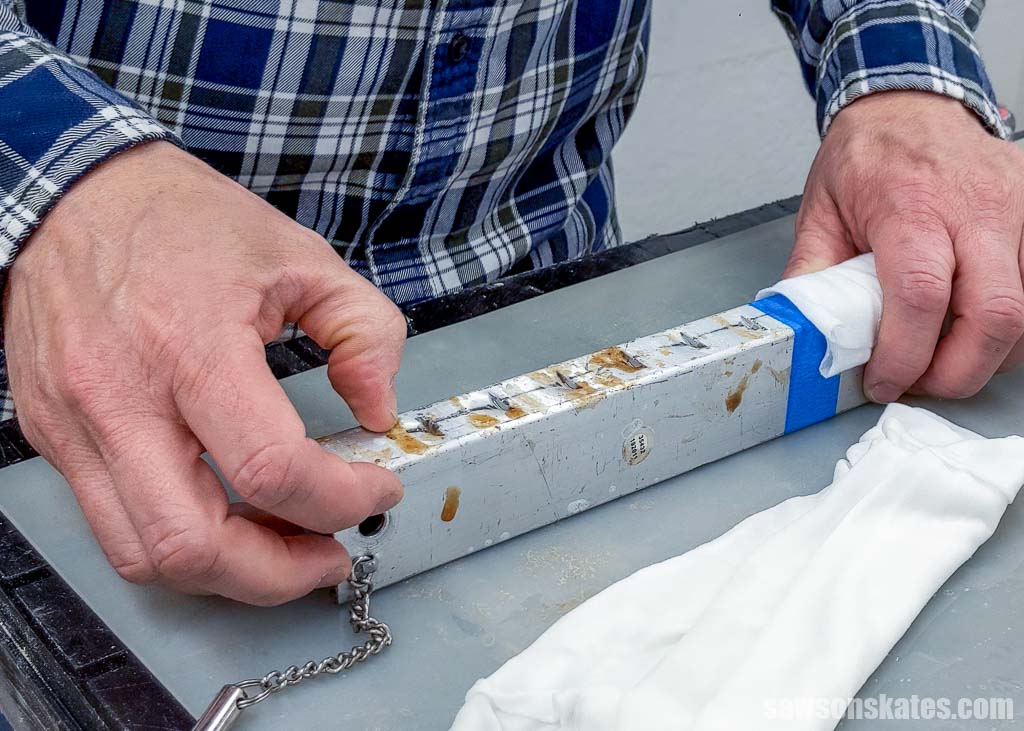
One member suggested using stainless steel pot scrubbers to remove the glue after allowing the liquid to soak, which I thought was a great idea. I bought some but forgot I had them when I did my experiment, so I will save them for the next time I need to clean my clamps.
I didn’t have enough clamps (no one has ever said that before, right?!!), so I tested one method on one end and a second on the other for some of the experiments.
Here are the results!
Seven Ways to Remove Wood Glue From Clamps
7. Freezer
Have you ever heard you can put a glass jar in the freezer to remove candle wax? The cold temperature causes the candle to contract, making it easier to pop off the glass. I think the idea behind freezing your clamps is similar.
My experience with using the freezer was it only succeeded in making my clamp cold! I placed it in the freezer for about 30 minutes, so possibly it wasn’t cold enough. If you try this technique, I recommend leaving it in for at least a few hours.
The fingernail scratch test barely made a dent in the glue, and using a 5-in-1 tool only resulted in breaking off a few chips.
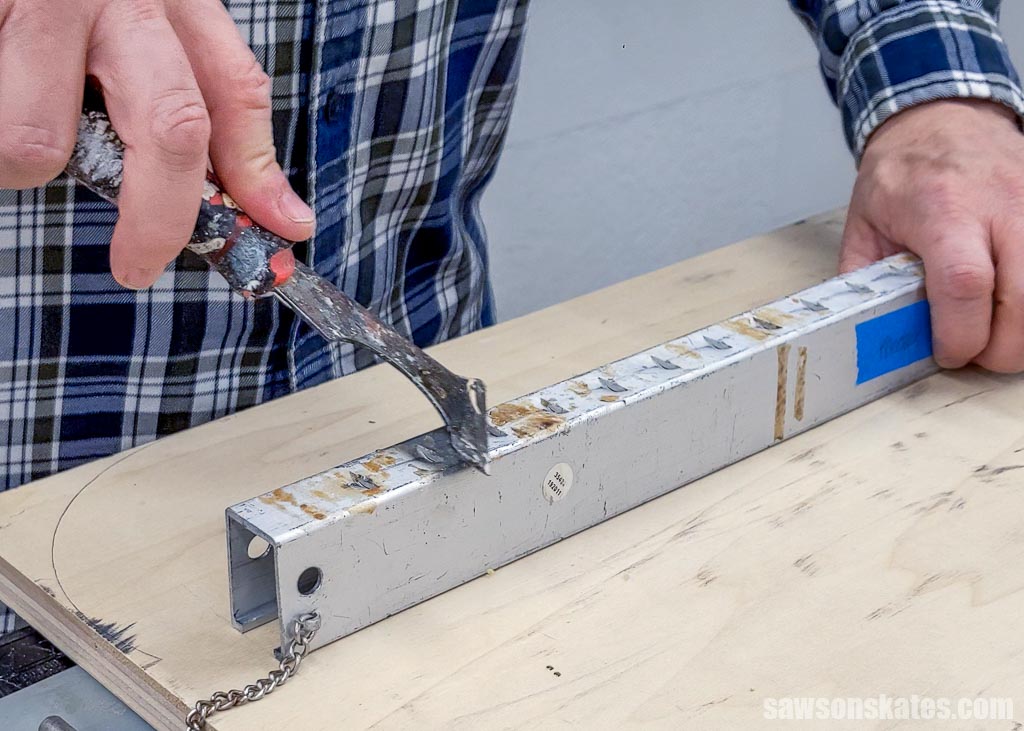
Verdict
This method didn’t work well for me and isn’t ideal for long clamps, so I recommend keeping them in your shop and saving your freeze for ice cubes!
6. WD40
This method involved spraying WD40 onto the dried glue, covering it with a rag, and allowing it to soak.
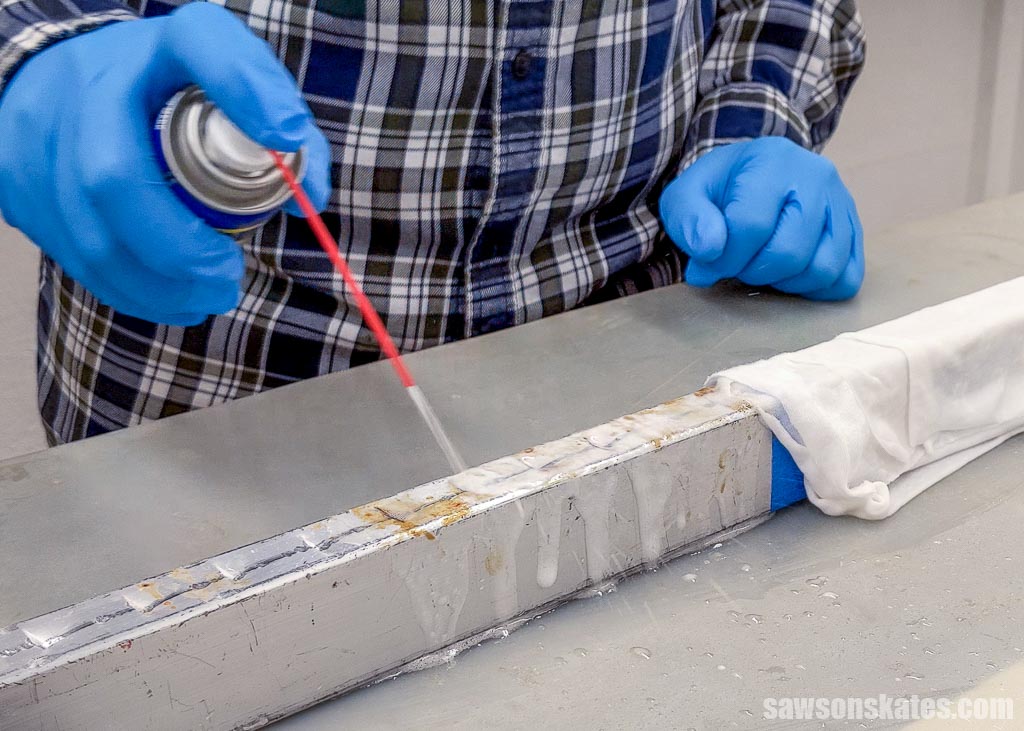
If you attempt this method, I recommend doing it outside your workshop. I ended up with a considerable amount of overspray across my workbench. I cleaned it as best I could, but I was concerned it might contaminate wood surfaces preventing finishes from adhering.
My experience with WD40 was that the glue didn’t budge with my fingernail test, and scraping it with a putty knife was difficult at best.
Verdict:
I recommend keeping WD40 away from your clamps and saving it for squeaky doors!
5. Vinegar
I frequently use vinegar for various household cleaning tasks, so I had high expectations for this method, but it wasn’t the slam dunk I was hoping for.
Related: How to Make Steel Wool and Vinegar Wood Stain
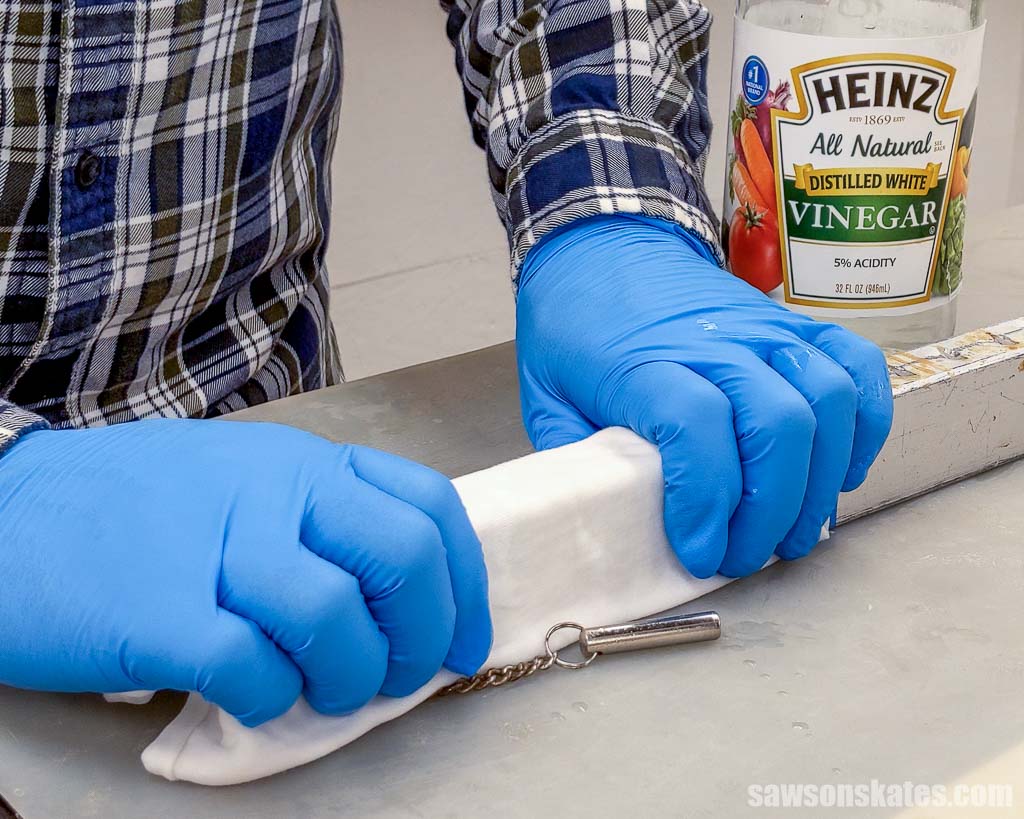
My experience was that the fingernail test barely moved the glue, and scraping it with a putty knife removed some, but it definitely required effort.
If I try this experiment again, I may warm the vinegar in the microwave before applying it to see if that improves its effectiveness.
Verdict
This method wasn’t effective for me, so I recommend saving vinegar for your salads!
4. Hot Water and Dish Soap
This method involved soaking a rag in hot water and dish soap and applying it to the glue. I believe the warm water is supposed to help soften the glue, while the soap helps to break down the glue’s bond with the metal.
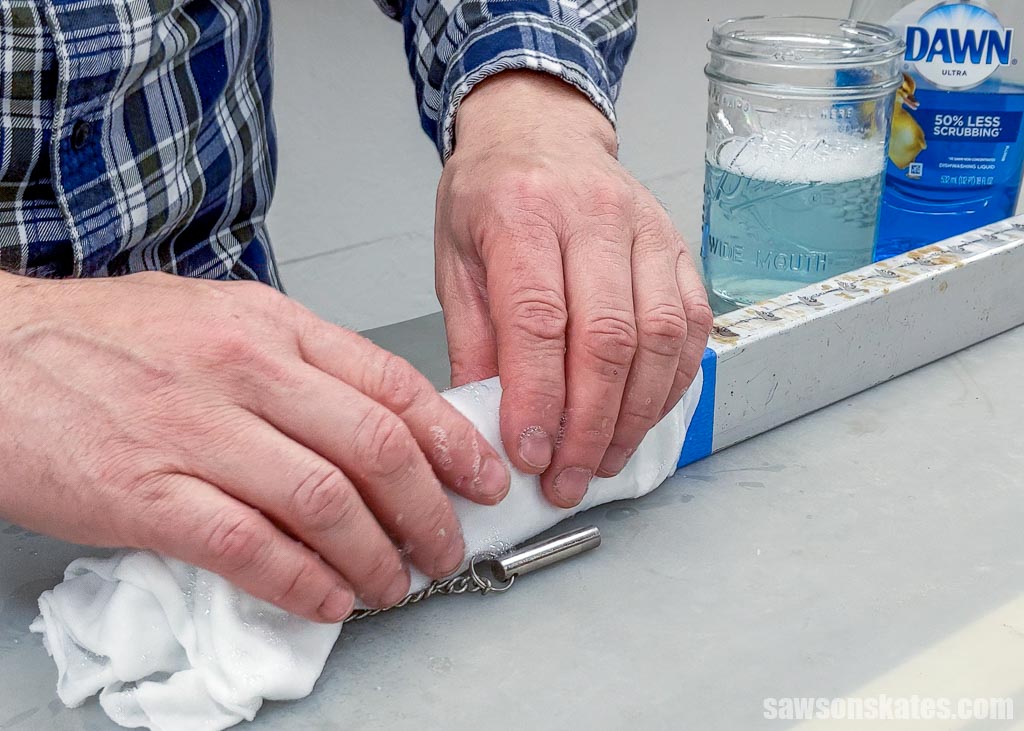
The glue felt soft and rubbery when performing the fingernail test, so I was encouraged this method would work. Although removing the glue by scraping with a 5-in-1 tool was possible, removing all traces of it still took some effort.
I used hot tap water, so I may try using even hotter water by warming it in the microwave. I wouldn’t want to use my hands to soak the rag in boiling water, so instead, I would place a dry rag on the clamp, then carefully pour the hot water/dish soap mixture over it. Or, if the clamp is small enough, you could place it in a plastic storage tote and submerge it in the hot water/dish soap solution.
Verdict
This method worked OK for me, but it does require some effort.
3. Heated Paint Remover
A heated paint remover is like a high-powered hair dryer commonly used to warm surfaces to melt old paint and finishes, and the same technique can be used to break down wood glue.
I didn’t try the fingernail test with this method because the paint stripper’s air is super hot! Instead, I went straight to scraping with a 5-in-1 tool.
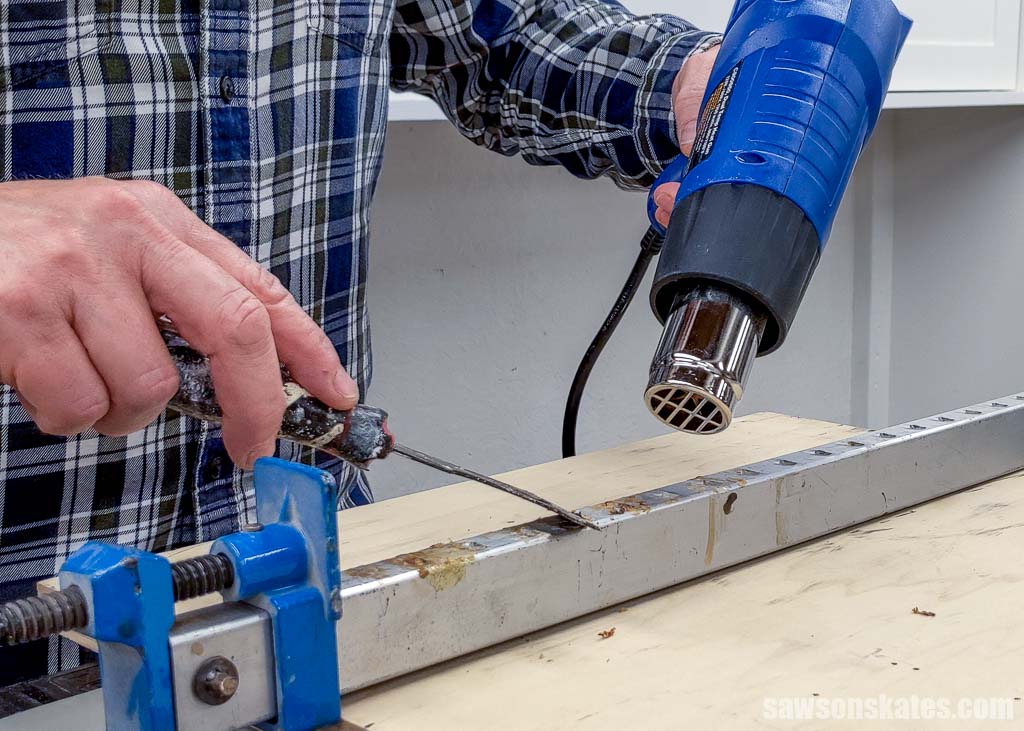
My experience was that the glue had softened, but it still required a considerable amount of effort to remove it. But honestly, I couldn’t give this method a fair shot because my paint remover quit working less than 2 minutes into the test!
That said, it did work, but it seemed like getting into the clamp’s nooks and crannies would be tricky.
If you try this method, keep in mind that hot air strippers can be dangerous if not used properly. Be sure to read your tool’s instructions, and don’t use it near flammable or combustible materials, as the hot air can ignite them.
Verdict:
This method worked, but it appeared it would take some time and effort, plus cleaning the glue out of the tight spaces would be challenging.
2. Acetone
Acetone is used in various products, including nail polish removers and degreasers, to dissolve paint and clean surfaces, so it seems like it could be an effective solvent for breaking down wood glue.
Related: Mineral Spirits vs Acetone (Differences + Which to Use)
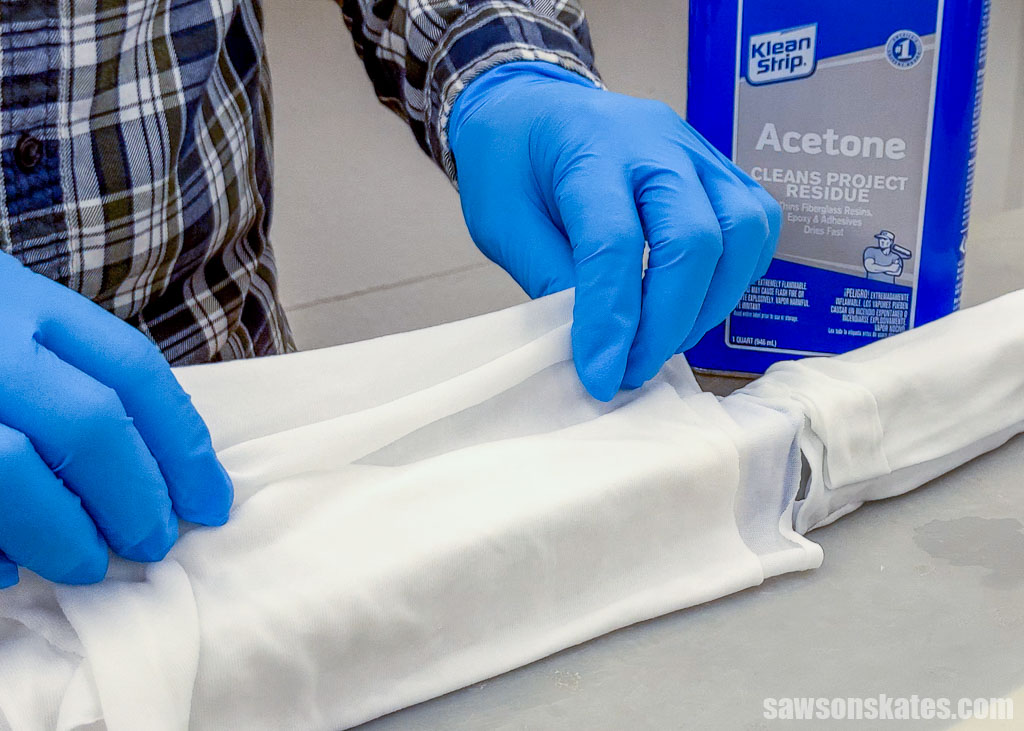
My experience was that the fingernail test revealed that the glue had softened and easily scratched off the surface. It came off so easily that instead of using the 5-in-1 tool, I rubbed it with an acetone-soaked rag. While rubbing required a little effort, the glue practically melted off the metal, making it one of my favorite methods for cleaning clamps.
Although this was one of the best methods for removing glue, it does have some drawbacks. Acetone has an odor and is flammable, so you should only use it in a well-ventilated area away from heat sources. And in addition to dissolving the glue, it also dissolved my disposable gloves!
Acetone evaporates quickly, so one thing I would do differently is only allow it to soak for a few minutes rather than 20 minutes.
Verdict
This method worked quickly and easily, and would’ve been my top choice if it hadn’t dissolved my gloves.
1. Denatured Alcohol
Denatured alcohol is frequently used to dissolve shellac flakes, as a cleaner, and remove adhesives, so it seemed like a promising solution for dissolving wood glue.
Related: Denatured Alcohol vs Mineral Spirits (Differences + Uses)
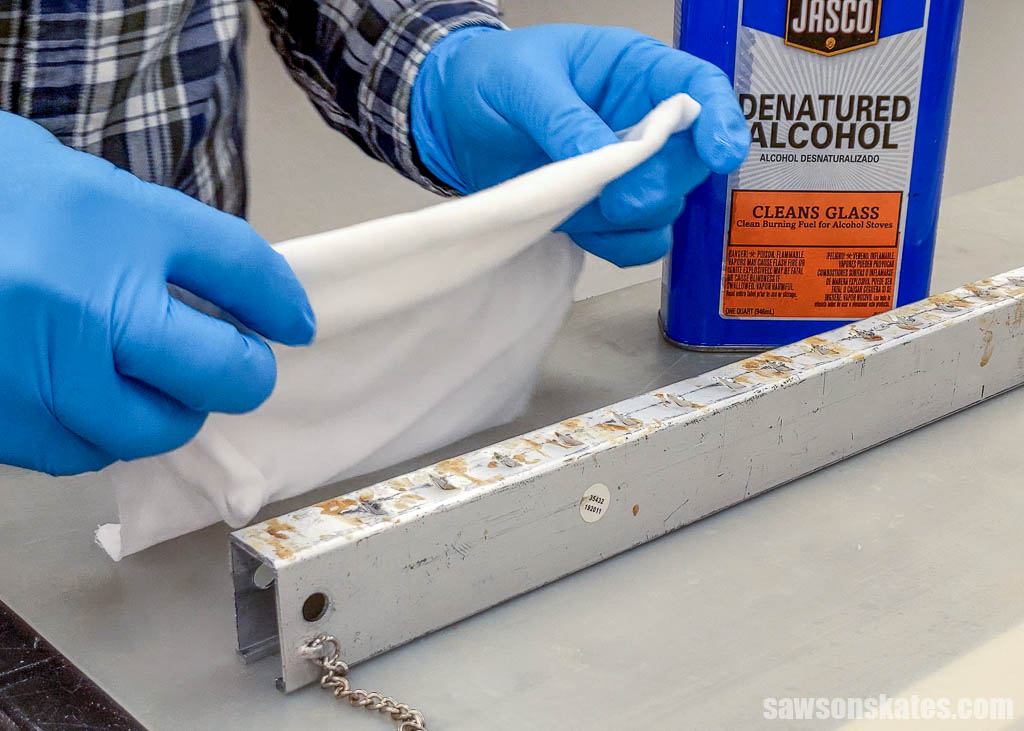
The fingernail test revealed that the glue had softened, felt rubbery, and came off easily. It came off so easily that I opted to use an alcohol-soaked rag instead of the 5-in-1 tool. Although rubbing was necessary, the glue practically melted off the metal, making this one of my preferred techniques for cleaning clamps.
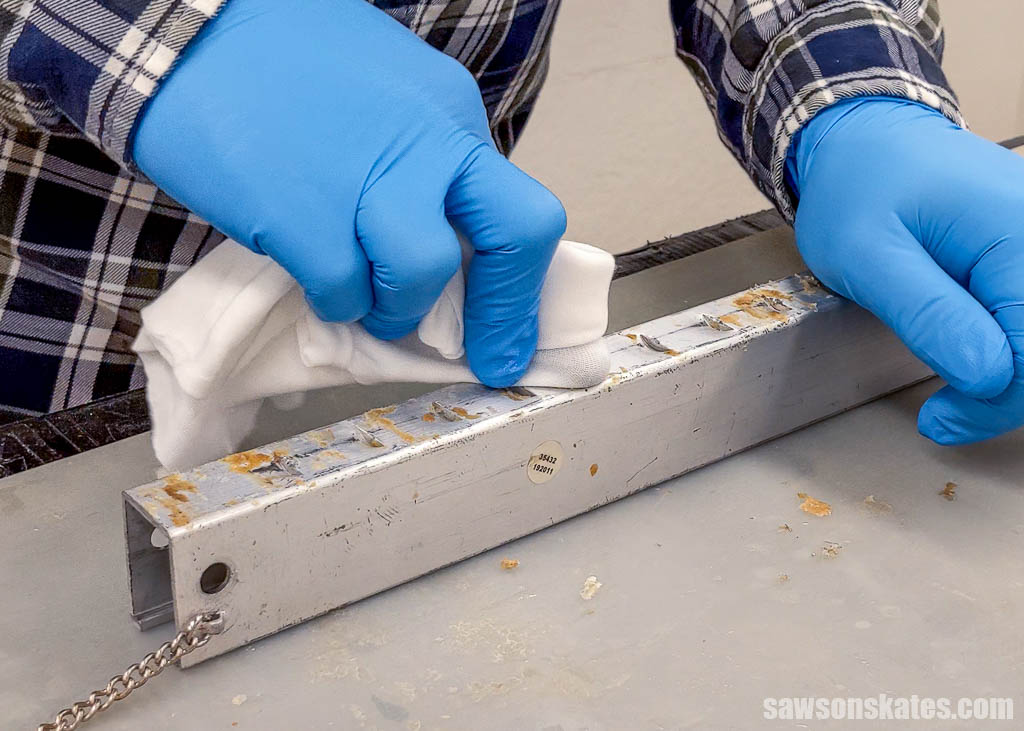
Denatured alcohol has similar drawbacks to acetone: it has an odor and is flammable, so you should only use it in a well-ventilated area away from heat sources. However, the alcohol didn’t dissolve my gloves like the acetone.
Verdict
This method worked quickly and easily, making it one of my preferred techniques for cleaning clamps.
How to Prevent Glue from Getting on Your Clamps
One of the best ways to avoid cleaning your clamps is to prevent the glue from getting on them in the first place.
It’s simple: put a protective barrier between your clamps and any glue-covered surfaces. You can use painter’s tape, wax paper, or parchment paper to do this.
You can also use the same wax you use to wax your table saw, such as Minwax Paste Wax. If you use any other type of wax, be sure it’s silicone-free, as it can prevent finishes from adhering to wood surfaces.
Final Thoughts
After trying seven methods for removing wood glue from clamps, I recommend using denatured alcohol or acetone as they are the quickest and easiest. Even though they have a strong odor and are flammable, both solvents practically melted the glue off my clamps. If you don’t want to use either of these chemicals, I’d suggest using a heated paint remover or soaking your clamps in hot water and dish soap.
However, the best way to avoid having to remove glue from your clamps is to prevent it from getting on them in the first place. Putting a protective barrier between your clamps and any glue-covered surfaces will help keep them clean and make cleanup much easier when you’re done.
Thank you for stopping by. If you enjoyed this tutorial, would you please take a moment and pin it to Pinterest? I’d really appreciate it!


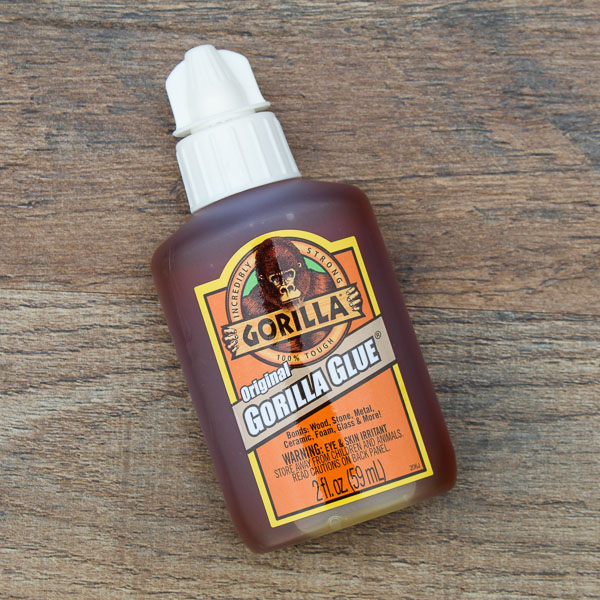
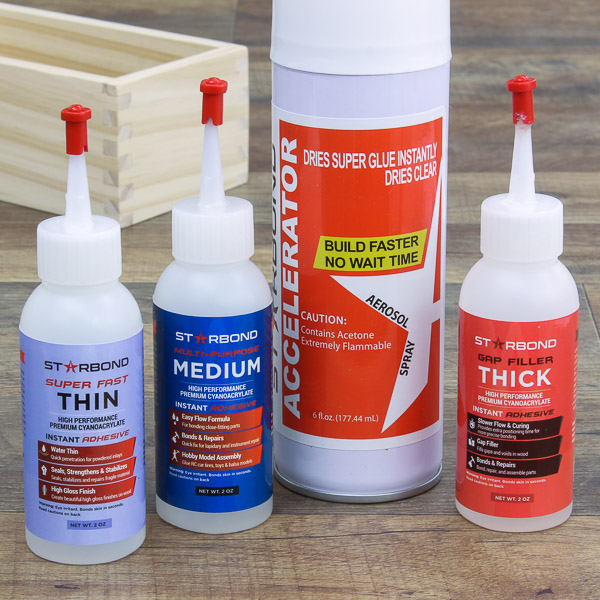
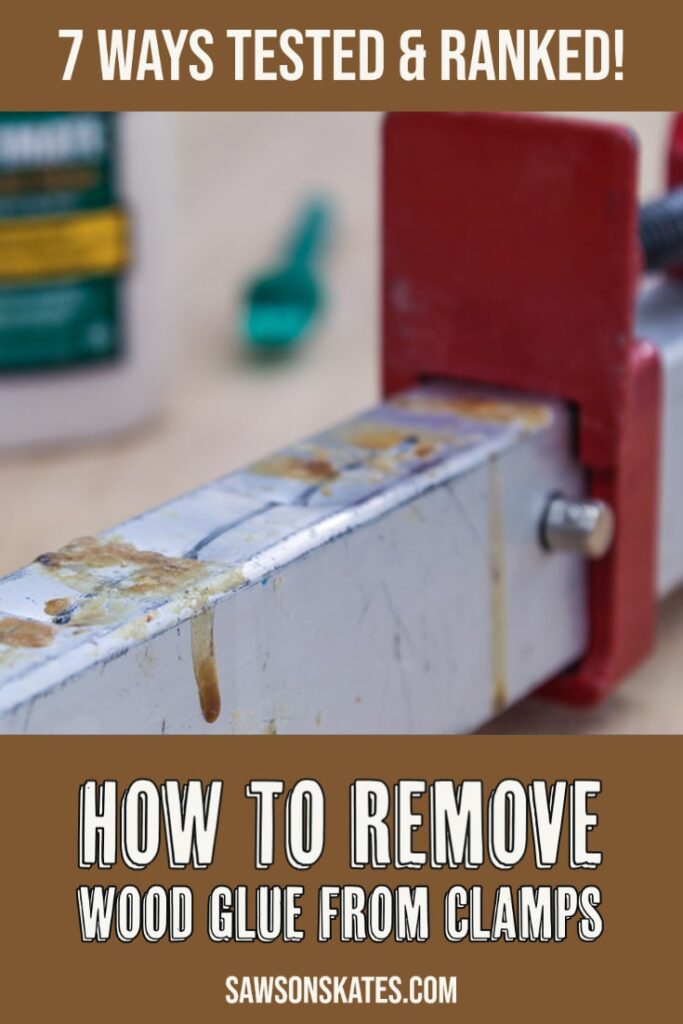
A good of stopping Wood Glue sticking to your clamp is put masking tape on the clamp and use a bradawl to make the holes in the tape that way the glue is on the tape and all you have to do peel of the tape.
Thank you very informative
I use mostly 3/4 pipe clamps.to stop the black marks from the pipe and glue I cut 3 inch pieces of 1″ pex pipe/cut the edge/side off to snap over the pipe.Put them on the joints and they do double duty to flush up the surfaces.Works for me.